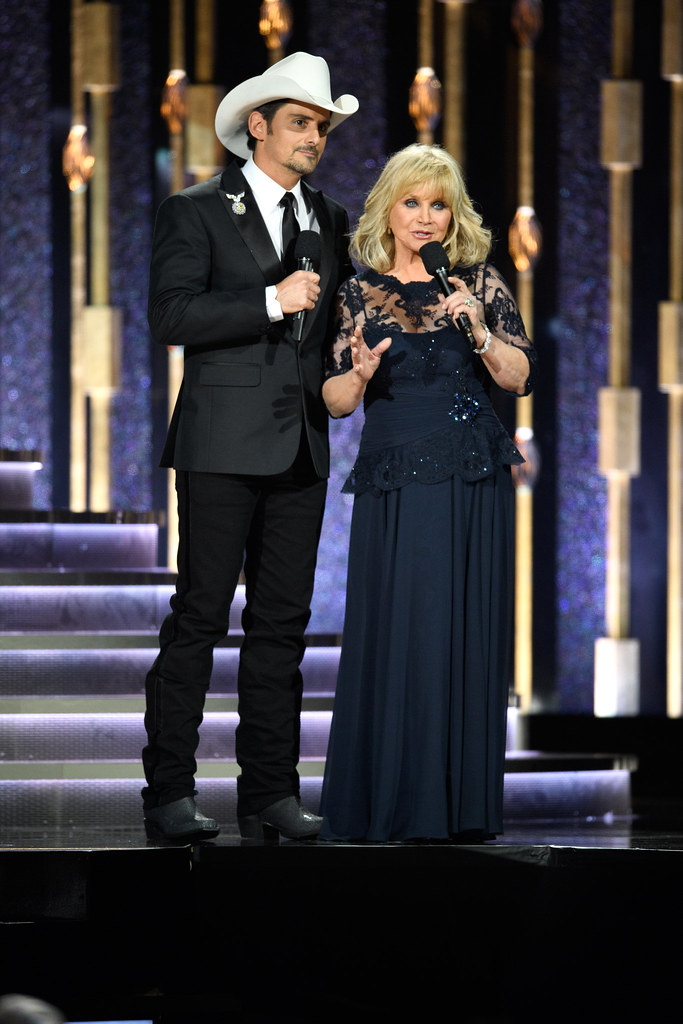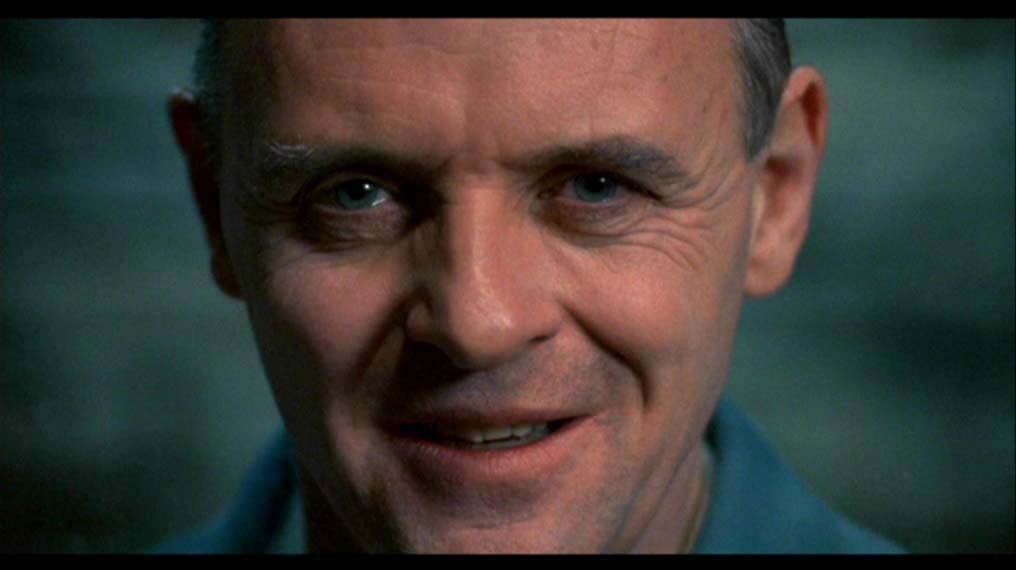
Some artists burn bright, but Barbara Mandrell lit the whole sky on fire. Throughout the late 1970s and early 1980s, her voice dominated the airwaves, her presence graced prime-time television, and her unmatched musicality captivated audiences across America. She was not just another country star; Barbara Mandrell was, in many ways, the blueprint for what a modern, multifaceted country entertainer could be, blurring lines between genres and showcasing incredible versatility.
Then, like a ghost in rhinestones, she was gone. For years, her legions of fans wondered what truly happened. Why did one of the most unstoppable forces in country music history step away while still at the top of her game, barely seen or heard from in the spotlight that once crowned her queen? The answer, as it turns out, is a poignant narrative of triumph, tragedy, and the ultimate triumph of personal peace over professional ambition.
We delve into the compelling, richly detailed story of Barbara Mandrell’s unparalleled journey—a secret history woven with raw talent, groundbreaking artistry, and a courageous choice that reshaped her life and cemented her enduring legacy. This is an exploration of the moments that defined her legendary career and the profound personal decisions that led to her quiet, yet powerful, exit from the public stage.

1. **A Star’s Incandescence: The Early Promise of Barbara Mandrell**Born on Christmas Day in 1948 in Houston, Texas, Barbara Ann Mandrell was destined for a life immersed in music. Her mother, Mary Ellen, was a music teacher, and her father, Irby Matthew Mandrell, would later bet his last penny on her talent. This foundation provided fertile ground for a prodigy to emerge, and Barbara began her musical journey at an astonishingly young age, displaying a natural ear and an eagerness to learn. Before even entering the first grade, her mother had taught her to play the accordion and read music, setting a remarkable precedent for her future accomplishments.
As her family moved to Oceanside, California, her musical education continued to flourish. During her elementary years, she mastered the saxophone as part of the school band. However, it was her foray into the steel guitar under the tutelage of her father’s friend, Norman Hamlet, that truly began to define her path. After just a year of practice, Irby Mandrell showcased his daughter’s extraordinary talent at a music trade show in Chicago. This performance caught the attention of country performer Joe Maphis, who would play a pivotal role in launching her early career as a professional musician.
By the tender age of eleven in 1960, Mandrell was performing the steel guitar on Joe Maphis’s country music show in Las Vegas, Nevada. This quickly led to a regular spot on the California television program *Town Hall Party*. Her summers off from school were spent back in Vegas performing, demonstrating a dedication far beyond her years. At 13, in 1962, she toured with country legends Johnny Cash and Patsy Cline, even sharing hotel rooms with Cline due to her underage status. She also played steel guitar for other luminaries like Red Foley, Little Jimmy Dickens, and Tex Ritter, establishing herself as a respected instrumentalist in a male-dominated field.
When Barbara turned 14, her parents formed The Mandrell Family Band, with Barbara on steel guitar, her mother on piano, and her father on lead vocals. They recruited two additional musicians, including drummer Ken Dudney, who would later become her husband in 1967. The band primarily entertained at military bases across the United States, performing a diverse repertoire that even included songs by The Beatles. During this period, Mandrell expanded her instrumental prowess, learning to play the banjo and bass guitar. Amidst her burgeoning musical career, she also embraced typical teenage activities, being voted “Miss Oceanside California” in 1965 and actively participating in her marching band, chorus, and student council before graduating high school in 1967.

2. **Nashville’s Calling: Grand Ole Opry and the Path to Stardom**Following her high school graduation, Mandrell embarked on a brief, yet significant, hiatus from performing. She married Ken Dudney, her band’s drummer, and initially chose to retire from the stage to embrace life as a full-time Navy wife. Her last performance before this short retirement was a trip to Vietnam, where The Mandrell Family Band bravely entertained troops fighting in the war. This period, while brief, marked a profound personal shift, as she envisioned a quieter, domestic life away from the spotlight.
However, fate, or perhaps an undeniable calling, intervened. Upon returning from Vietnam, Mandrell found herself alone when her husband was temporarily deployed overseas for his Navy pilot career. Seeking solace and connection, she visited her parents, who had recently moved to Nashville, Tennessee. It was during this visit that her path veered sharply back towards music. The family attended a performance at the legendary Grand Ole Opry. While watching Dolly Parton perform on that hallowed stage, a familiar spark ignited within her. “I wasn’t cut out to be in the audience,” she recalled in 2003, a sentiment that perfectly encapsulated her rekindled desire to perform.
Inspired and resolute, Barbara leaned over and told her father, “If you’ll manage me, I want to get back into show business.” Her father, Irby, ever her steadfast supporter, replied, “If you want me to, I’ll bet my last penny on you.” With her father now acting as her manager, Mandrell began to make her return. She started by playing steel guitar on a show in Nashville’s Printer’s Alley, but her exceptional talent soon saw her singing on several selections as well. Her dual mastery as both a vocalist and a multi-instrumentalist immediately caught the attention of multiple record companies.
Six different labels vied for her signature, a testament to her undeniable star quality. Among those watching her performance was the renowned country music producer Billy Sherrill. In 1969, Mandrell signed her first recording contract with Sherrill’s label, Columbia Records, officially launching her singing career. This pivotal moment would quickly lead to another significant milestone: in 1972, she was inducted as a member of the Grand Ole Opry, a place she lovingly described as feeling “comfortable and is home.” She proudly affirmed, “I’m proud to be a member of the family of members that can call the Opry home for the rest of their careers.”

3. **Forging a New Sound: Barbara’s Country-Soul Fusion**Barbara Mandrell’s singing career at Columbia Records began with a distinctive approach, cutting covers of R&B–soul selections that immediately set her apart. Her first Columbia single, a cover of Otis Redding’s “I’ve Been Loving You Too Long (To Stop Now),” made its way onto America’s Billboard country songs chart in 1969. This was a bold statement, blending the raw emotion of soul with the burgeoning sounds of country, foreshadowing a career built on crossover appeal.
The success continued with the Billy Sherrill-penned “Playin’ Around with Love” in 1970, which became her first song to crack the top 20, peaking at number 18 on the Billboard country chart. She further solidified her unique blend with covers of Aretha Franklin’s “Do Right Woman, Do Right Man” and Roy Head’s “Treat Him Right.” These early recordings demonstrated her powerful vocal delivery and an innate ability to inject a soulful urgency into her interpretations, showcasing a “blue-eyed soul” quality that captivated listeners.
Her debut studio album, also titled *Treat Him Right*, was released through Columbia in 1971, compiling her charting singles and a mix of covers by artists like Ivory Joe Hunter and Joe South. This early success was quickly recognized by the industry, earning Mandrell the Top New Female Vocalist award from the Academy of Country Music in 1970. Critics and writers alike took notice of her innovative fusion of country music with R&B and soul, with author Kurt Wolff describing her early chart records as “colorful, spirited country soul,” and highlighting their grounded, soulful nature compared to later material.
During this period, Mandrell also embarked on a series of successful duets with country singer David Houston. Several of their collaborative recordings were released as singles, charting well in both the United States and Canada. Their first single, “After Closing Time,” notably reached number six on the Billboard country survey and number four on Canada’s RPM Country songs list. Their album, *A Perfect Match*, showcased their vocal chemistry, with hits like “I Love You, I Love You” climbing into the Billboard top ten. While her distinctive sound was lauded by many, some critics, like Stephen Thomas Erlewine, occasionally felt that Mandrell’s Columbia material, despite its strength, at times lacked a singular individuality, echoing the style of other Columbia artists, suggesting producer Billy Sherrill was still discovering her unique niche.

4. **The Ascent to the Apex: Chart-Toppers and Industry Acclaim**By 1973, Barbara Mandrell achieved what was widely considered her breakthrough record with “The Midnight Oil.” This powerful song told the compelling story of a wife engaged in an affair, skillfully weaving a narrative of clandestine romance and deception. The single resonated deeply with audiences, becoming her second solo top ten hit and reaching number seven on the Billboard country chart, as well as number five on the RPM country chart. Its accompanying studio album of the same name also performed strongly, climbing to the number eight position on the Billboard country LP’s chart, firmly establishing her as a rising force in country music.
However, a significant shift in her career trajectory occurred in 1975 when Mandrell decided to leave Columbia’s roster and sign a new recording contract with ABC–Dot, which would later be acquired by MCA Records. This move proved to be a pivotal decision, as she began collaborating with producer Tom Collins, who recognized her potential for broader appeal. Collins intentionally incorporated a more pronounced pop production into her music, a strategic choice that significantly broadened her appeal with listeners, catapulting her towards mainstream success.
Her first ABC–Dot single, “Standing Room Only” in 1975, marked an immediate impact, becoming her first top five Billboard country song. This was quickly followed by other successful top 20 hits such as “That’s What Friends Are For” and “Midnight Angel.” Collins’s genius extended to further integrating R&B elements back into her repertoire, a move that only amplified her commercial success. Her covers of Denise LaSalle’s “Married But Not to Each Other” and Shirley Brown’s “Woman to Woman” were particularly impactful, both reaching the American and Canadian country song top five in 1977. Notably, “Woman to Woman” also became her first single to cross over and enter the prestigious Billboard Hot 100, signifying her growing reach beyond the country genre.
Mandrell truly reached her commercial zenith in the late 1970s, skillfully delivering compelling songs often centered around themes of infidelity and cheating, which resonated profoundly with a wide audience. In 1978, “Sleeping Single in a Double Bed” soared to the number one spot on both the Billboard and RPM country charts, marking her first chart-topper. This monumental success was followed in 1979 by her captivating cover of Luther Ingram’s R&B hit “(If Loving You Is Wrong) I Don’t Want to Be Right.” This track not only topped the North American country charts but also famously crossed over into the top 40 of the Billboard Hot 100 and the Canadian pop songs chart, further showcasing her immense crossover appeal. It even reached the top ten on Billboard’s adult contemporary survey, solidifying her status as a mainstream star. Her talent and success were formally recognized when she was awarded the Country Music Association’s 1979 Female Vocalist of the Year accolade, cementing her position at the forefront of the genre.
5. **A Television Phenomenon: “Barbara Mandrell & the Mandrell Sisters”**With her career at its peak, Barbara Mandrell had transformed into a dynamic headlining concert act, renowned for her elaborate stage productions that included intricate choreography and dazzling costume changes. A true spectacle, her performances famously featured Mandrell effortlessly playing multiple musical instruments, showcasing her extraordinary versatility and showmanship. This captivating stage presence was further highlighted when one of her headlining performances was adapted into a cable television special, appropriately titled *The Lady Is a Champ*, which brought her electrifying live energy to a broader audience.
Her growing national appeal didn’t go unnoticed in Hollywood. The NBC network, recognizing her charisma and widespread popularity, presented her with multiple offers to host her own syndicated television show. However, Mandrell, ever discerning, initially declined these overtures. The turning point came when NBC producer Marty Krofft was shown a wallet-sized photograph of Barbara and her sisters, Irlene and Louise, all playing different musical instruments. This image, a vivid testament to their collective talent, prompted Krofft to approach Mandrell with a unique proposal: a program she could co-host with her talented siblings. Encouraged by this vision for a family-centered show, she eventually agreed to host a series on his network.
In 1980, Mandrell officially signed with NBC to host what would become the immensely popular national television variety series, *Barbara Mandrell & the Mandrell Sisters*. The show was a vibrant blend of music, dance numbers, and comedy sketches, hosted by Barbara alongside her sisters Irlene and Louise. Barbara, a whirlwind of energy, learned choreography for the show and was routinely featured playing a dazzling array of musical instruments, further cementing her reputation as a multi-talented entertainer. The program’s format allowed her to display every facet of her artistry, from powerful vocals to intricate instrumental solos.
Authors Tim Brooks and Earle F. Marsh, in their book *The Complete Directory to Prime Time Network and Cable TV Shows*, highlighted the sisters’ dynamic roles, noting that Barbara often portrayed the “serious, pushy sister,” while Irlene was seen as the “y, vain one.” Despite the show’s glamorous facade, Mandrell often found herself pushing back against NBC executives who insisted on incorporating clichéd elements like hay barrels, features she felt perpetuated outdated stereotypes of traditional country-western shows. “They expect you to be barefoot and ignorant,” Mandrell candidly commented in 2003, reflecting her fierce pride and desire for authenticity. At its zenith, *Barbara Mandrell & the Mandrell Sisters* was a massive success, estimated to attract roughly 40 million viewers per week, and for her outstanding work, Mandrell received a prestigious nomination for Best Actress in a Television Musical or Comedy Series by the Golden Globe Awards.

6. **”I Was Country When Country Wasn’t Cool”: An Anthem Defined**Amidst the whirlwind success of her prime-time variety show, Barbara Mandrell released a song in 1981 that would become an enduring anthem and one of her most iconic hits: “I Was Country When Country Wasn’t Cool.” This powerful declaration, featuring the legendary George Jones, soared to the top of the charts, becoming her fourth number one song on the Billboard country chart. Its release during an era where country music was, ironically, “cool” enough to merit a Golden Globe-nominated variety show, gave the song a profound, almost prophetic resonance.
The song transcended a mere chart-topper; it became a defining statement for country music pride, a defiant and celebratory embrace of roots and heritage. Its lyrics struck a chord with countless fans who remembered a time when country music wasn’t as widely accepted, echoing their own experiences of loyalty to the genre. Mandrell’s heartfelt delivery made it clear that this wasn’t just a song, but a personal testament to her identity and unwavering love for the genre that had shaped her life.
The personal connection to the song’s message ran deep for Mandrell. She shared the fascinating backstory of its co-writing process with The Tennessean, revealing how the concept originated from her own childhood experiences. “One day, I was telling (co-writers) Kye Fleming and Dennis Morgan that when I was a child, kids used to tease me, ‘Yeehaw, country music,’ they’d say, trying to tease me or make me feel embarrassed,” she recounted. This memory, steeped in the innocence and vulnerability of youth, provided the emotional core for the song.
Years later, those same kids who had once teased her were adults, showing up in her autograph lines, a stark and satisfying testament to how much times had changed and how broadly country music, and indeed Barbara Mandrell, had captured the nation’s heart. Her pride in the genre was palpable and unapologetic: “It might be tacky of me to say that, but I’m proud of country music. I love it. It’s everything to me.” This anthem not only cemented her legacy as a true country icon but also validated the experiences of generations of country music fans, celebrating their shared connection to a genre that, through artists like Mandrell, had found its undeniable, cool place in the cultural landscape.

7. **The Price of Stardom: Burnout and Vocal Strain**Despite the monumental success and widespread adoration that accompanied her career peak, especially with the popularity of *Barbara Mandrell & the Mandrell Sisters*, the constant, grueling workload began to exact a heavy toll. The relentless pace of simultaneously managing a demanding prime-time television show, recording hit albums, and maintaining a robust touring schedule proved to be physically and emotionally exhausting. This was not merely a busy period; it was an unsustainable grind that pushed even Mandrell’s incredible stamina to its limits.
The rigorous schedule meant that Mandrell was often operating on fumes. She frequently had to grab precious, fleeting naps on her tour bus, which was routinely parked right next to the television studio, a stark illustration of how little time she had for rest between her numerous commitments. The strain on her body was immense, but it was the stress on her most vital instrument—her voice—that became a critical concern. To merely keep performing, she often required Cortisone shots before show tapings to alleviate the severe vocal strain, a testament to the extreme pressure she was under.
The physical and emotional burnout became impossible to ignore. Physicians, deeply concerned by the alarming state of her health and the damage she was inflicting upon herself, issued stern warnings. They advised her that continuing at this pace could lead to permanent vocal damage, a devastating prognosis for any singer. Faced with the grim reality that her relentless pursuit of excellence was jeopardizing her long-term well-being and career, a difficult decision had to be made.
In 1982, after a highly successful but incredibly arduous two-year run, Mandrell announced that *Barbara Mandrell & the Mandrell Sisters* would be ending. This decision, though shocking to many fans who loved the show, was a critical step in preserving her health and career. This intense period served as a profound lesson, highlighting the immense physical and emotional price of her relentless pursuit of stardom. It foreshadowed a growing awareness of her own limits and the nascent realization that a different path, one prioritizing personal well-being, might ultimately be necessary for her future.

8. **A Shattered Reality: The 1984 Car Accident**The trajectory of Barbara Mandrell’s dazzling career, seemingly unstoppable, was irrevocably altered on a fateful day in 1984. The narrative of her eventual retreat from the spotlight, a story often whispered among fans, finds its poignant beginning not in scandal or slow decline, but in a moment of agonizing physical and personal pain. It was September 11, 1984, when Mandrell, accompanied by her two oldest children, was heading home from a shopping trip in Tennessee.
Suddenly, and without warning, another vehicle veered across the center line, colliding head-on with her car. The impact was devastating. Mandrell sustained horrific injuries that were almost fatal, including a broken femur, a shattered ankle, an injured knee, and a concussion that resulted in temporary brain damage. The driver of the other vehicle tragically lost their life in the collision, while her children, mercifully, survived with only minor injuries, a small measure of solace amidst the chaos.
This catastrophic event plunged Mandrell into a prolonged and arduous recovery. The initial trauma led to numerous surgeries on her femur and ankle, followed by a relentless battle against intense pain and a deep, gnawing depression. The physical wounds were severe, but the emotional and psychological toll was equally profound. In her own words, reflecting on that dark period, Mandrell confessed to CNN, “I never thought I would ever sing again or be Barbara Mandrell again, or any of that,” a testament to the sheer scale of the despair she faced.
Beyond the immediate physical injuries, the accident cast a long shadow over her well-being, leaving her to grapple with mood swings and a persistent emotional angst that would continue to challenge her in the years that followed. It was a life-altering event that not only threatened her career but fundamentally reshaped her perception of life, priorities, and the fragile nature of existence. The incident marked an undeniable turning point, a stark reminder that even the brightest stars are not immune to the unpredictable cruelties of fate.

9. **The Unyielding Spirit: A Courageous Return**Despite the debilitating injuries and the profound emotional scars left by the 1984 accident, Barbara Mandrell’s indomitable spirit would not be easily extinguished. The industry watched, and fans held their breath, as she embarked on a courageous journey back from the precipice, demonstrating a resilience that defied the severity of her trauma. It was a long, arduous road, but Mandrell, with her characteristic grit, fought her way back, determined to reclaim a semblance of her former life.
Less than a year after the near-fatal crash, in May 1985, Mandrell bravely returned to the recording studio. This pivotal step marked her re-entry into the professional realm, a testament to her enduring love for music and her refusal to let the accident define her. This period yielded the top ten country single “There’s No Love in Tennessee,” a track that, perhaps fittingly, offered a glimpse into the raw emotions she may have been processing.
This single was included on her *Greatest Hits* compilation, also released in 1985, reminding the public of the vast catalog of success she had already accumulated. Then, in 1986, came an even more symbolic return to the stage. She performed for the first time since the accident at the Los Angeles Universal Amphitheatre, with none other than Dolly Parton serving as her opening act. It was a triumphant moment, signaling to the world that Barbara Mandrell, though changed, was still very much a force to be reckoned with.
Her albums from this era, like *Get to the Heart* (1985), continued to produce hits such as “Fast Lanes and Country Roads” and “Angel in Your Arms,” both reaching the Billboard top ten. Her final album for MCA, *Moments* (1986), further solidified her comeback with the top ten country song “No One Mends a Broken Heart Like You.” While outwardly it appeared she was pushing forward with unwavering determination, the quiet shifts happening behind the scenes, away from the glare of the public eye, would eventually prove to be far more significant than her undeniable professional resurgence.
Read more about: From Gospel Choir to Disco Royalty: The Electrifying Journey of Sylvester, the ‘Queen of Disco’

10. **A Shifting Current: Later Recordings and the Industry’s Evolution**As the late 1980s unfolded, Barbara Mandrell continued to navigate the ever-changing tides of the music industry, even as her personal recovery remained an ongoing process. In 1987, she signed a new recording contract with EMI America, releasing the studio album *Sure Feels Good*. Despite optimistic predictions from outlets like United Press International, suggesting the effort “should put her back on top of the charts,” the album’s success was more modest, with only “Child Support” reaching the top 20 of the North American country charts.
This period marked a subtle yet undeniable shift in the landscape of country music, as a new generation of more traditionally-oriented artists began to emerge and dominate the airwaves. Consequently, Mandrell’s subsequent singles and albums, while still showcasing her remarkable talent, found progressively lower chart positions. Yet, her enduring appeal as a live performer remained strong; she continued to tour and command a popular concert attraction throughout the 1980s and well into the 1990s, a testament to her powerful stage presence and connection with her audience.
Her journey led her to Capitol Records in late 1987, where her first single, a cover of Ray Price’s “I Wish I Could Fall in Love Today,” once again soared into the top five of both American and Canadian singles charts. This track was featured on her nineteenth studio album, *I’ll Be Your Jukebox Tonight* (1988), a project notable for its embrace of a more traditional country sound and the inclusion of Fred Foster as a producer for the first time. The album also produced the top 20 single “My Train of Thought” (1989) and “Mirror, Mirror,” her final singles to chart in the United States.
Mandrell remained with Capitol until 1991, releasing albums such as *Morning Sun* and *No Nonsense* in 1990. The latter even saw her ink a commercial deal with the No Nonsense panty hose brand, illustrating her continued relevance in broader pop culture. Critics often lauded her Capitol-era work; Mary A. Bufwack and Robert K. Oermann praised the “strong female lyrics” of her songs, while Bill Carpenter described her 1991 album, *Key’s in the Mailbox*, as exemplifying “Heartful soul and contemporary country.” Even as her chart dominance waned, her artistry and ability to connect with listeners were still very much intact, proving that her impact extended beyond mere numbers.
She also continued to explore new avenues for her music, even as her mainstream chart presence diminished. In 1994, the New York label Direct Records released two albums that were marketed exclusively through television networks like TNN: *Acoustic Attitude*, featuring re-recordings, and *It Works for Me*, an album of new material. This commitment to creating and sharing music, even in innovative formats, underscored her unwavering dedication to her craft. Temporarily signing with Razor & Tie for the reissue of *It Works for Me* in 1997, it became clear that while the industry around her was rapidly evolving, Mandrell was still finding ways to make music on her own terms, all while maintaining her popular presence on the Grand Ole Opry and various network television appearances.
11. **The Ultimate Prioritization: Family Over Fame**The relentless pace of Barbara Mandrell’s career, coupled with the profound impact of her 1984 car accident, began to crystallize a new set of priorities in her life. By 1997, at the cusp of her 50th birthday, a critical juncture arrived. She was a mother to three children, with her youngest son still navigating his high school years. Having dedicated decades of her life to the relentless demands of the spotlight, Mandrell found herself at a crossroads, faced with a deeply personal and life-altering choice.
The decision was stark: continue the ceaseless pursuit of another chart-topping hit, enduring the chaos of tour buses, flashing cameras, and the perpetual public eye, or choose a different path—one centered on raising her children with the quiet presence they deserved. Mandrell, with a wisdom born from experience and hardship, decisively chose family. It was a momentous and courageous choice, one that shocked Nashville at the time, given her continued standing as a beloved and respected artist.
This wasn’t merely a hiatus or a temporary break. The context reveals that Mandrell made the definitive decision to put away the microphone, prioritizing her family above all else. “Mandrell had been through the fire and came out the other side with her priorities carved in stone. Awards and headlines were not what mattered anymore. Her legacy was already cemented in the halls of country music history. What she wanted most was peace,” the narrative powerfully states.
While an interview with Billboard at the time indicated her desire to focus on a full-time acting career – a path she did pursue until 2000, appearing in shows like *Baywatch* and *Touched by an Angel* – the deeper, more resonant truth, as understood in retrospect, was her profound commitment to her loved ones. The allure of further accolades or commercial success paled in comparison to the quiet joy of being a mother, a role she cherished above all others. This was the true inflection point for the singer, marking the conscious and deliberate shift in her life’s direction.

12. **The Grand Farewell: Her Last Dance**Having made the resolute decision to step away from her iconic musical career, Barbara Mandrell orchestrated a farewell that was as heartfelt and memorable as her stage presence had always been. It was not a quiet fade, but a deliberate and emotional final performance, a last bow to the fans and the music that had defined so much of her life. In October 1997, the hallowed stage of the Grand Ole Opry house bore witness to this poignant moment, a setting perfectly suited for an artist who considered the Opry her “home.”
This final musical performance was a significant event, so much so that it was captured and aired on national television, allowing countless fans to partake in her swansong. Titled *Barbara Mandrell and the Do-Rites: The Last Dance*, the television special premiered on TNN later that year, immortalizing her farewell for posterity. It was more than just a concert; it was a testament to her enduring legacy and a deeply personal goodbye to an era.
The concert served as a powerful culmination of her decades-long career, showcasing the very essence of what made her a star: her electrifying stage presence, her multi-instrumental talents, and her emotive vocal delivery. It allowed her to express gratitude to her loyal audience, who had supported her through every triumph and challenge. This final performance was a carefully chosen moment, a way for Mandrell to control her narrative and depart on her own terms, leaving a lasting image of grace and strength.
It was a definitive end to her touring, recording, and performing career, drawing a clear line between her past as a country music icon and her future focused on private life. This televised special allowed her to leave the stage with intention, celebrating her remarkable journey one last time before embracing the peace and domestic responsibilities she now prioritized. The “Last Dance” was not just a show; it was a profound act of closure for both Mandrell and her devoted fanbase.
Read more about: The Shocking Original ‘Pretty Woman’ Ending Disney Scrapped, and How Julia Roberts (and Her Character) Truly Reacted
13. **Embracing the Quiet: A Life Beyond the Limelight**Barbara Mandrell’s retirement was not merely a step back; it was a complete and decisive departure, marked by actions that underscored her commitment to her new life. She didn’t just take a break; she took measures that ensured a definitive break from her musical past, making it clear that her decision was irreversible. The ultimate symbol of this commitment was her act of selling every musical instrument she owned.
This was not a gesture of disdain for her craft, but rather a profound statement of embracing her new path. She never recorded another track, nor did she sing in public again, save for her cherished performances in church. As the context plainly states, “She closed the book and locked the cover for good.” This resolute choice shocked many in Nashville, who found it hard to fathom an artist of her caliber walking away so completely.
Her life after 1997 became one largely devoid of the flashing cameras, the roar of the crowds, and the demanding schedules that had once been her norm. While she did continue acting until 2000, appearing in various television series, this too eventually phased out, giving way to a life centered on her family and domestic responsibilities. There was no secret illness, no scandal to drive her away, and certainly no slow fade into irrelevance.
Instead, Barbara Mandrell walked away on her own terms, a rare and courageous act in an industry that often consumes its stars. She chose a life that many artists could only dream of, one where “the roar of the crowd was replaced by the quiet joy of being Mom.” This deliberate choice, this prioritization of personal peace and family over the relentless pursuit of fame, became, in its own way, perhaps the most “country” thing she ever did, embodying the values she had celebrated throughout her career.
14. **An Enduring Legacy: More Than Just a Comeback**Barbara Mandrell’s deliberate exit from the public eye only deepened the mystique surrounding her, fueling years of speculation among fans about what truly happened. Yet, the story of her vanishing became, in itself, a powerful part of her enduring legacy. The answer, when it finally emerged into public view, underscored her profound conviction in the choices she had made. Her rare public appearance at the Grand Ole Opry’s 100th-anniversary celebration offered a glimpse into the life she had chosen.
There she was, at 76 years old, radiating grace as she swayed along to Kelsea Ballerini’s rendition of her 1981 classic, “I Was Country When Country Wasn’t Cool.” She soaked in the thunderous applause, a reminder of just how deeply her presence had been missed, but the moment also served to confirm a powerful truth: Barbara Mandrell was never coming back to the stage as a performer. She had closed that chapter, firmly and definitively.
Her absence only amplified the memory of her extraordinary talent and groundbreaking career. Her legacy, already cemented in the halls of country music history with accolades like her 2009 induction into the Country Music Hall of Fame, transcends album sales or chart positions. It speaks to an artist who dared to redefine country music, blending genres and captivating audiences with her multi-instrumental prowess and dynamic performances.
Read more about: Timeless Resonance: Billy Crystal on the Enduring Magic and Chemistry of ‘When Harry Met Sally’ with Meg Ryan
Indeed, when she appeared on the Opry stage, she didn’t need to sing a single note to command the room. The crowd rose to their feet for her anyway, remembering the indelible mark she had left. They will always remember. For Barbara Mandrell, a comeback was never necessary; she had already made history, leaving behind a profound testament to artistry, resilience, and the ultimate triumph of personal values over professional ambition. Her story is a rare and beautiful anthem to living life on one’s own terms, proving that true peace can be the greatest reward of all.








